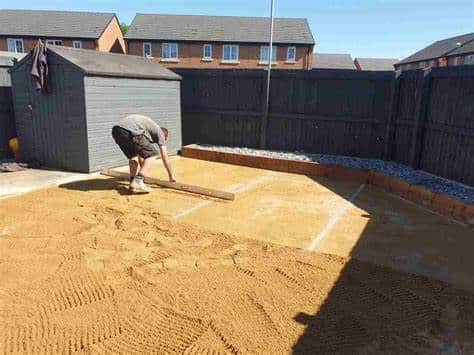How To Install Drainage For Your Artificial Grass Lawn In Coronado?

- The foundation of a well-draining artificial grass lawn starts with the right base material. Most installers recommend a combination of crushed stone and decomposed granite as the base. These materials provide excellent drainage and stability for your synthetic turf. The depth of the base material can vary depending on your location and the specific drainage needs, but a typical recommendation is a minimum of 2 to 4 inches. Proper compaction of the base is crucial to prevent settling and uneven surfaces.
- A permeable membrane, also known as a weed barrier or geotextile fabric, should be placed over the base material before laying the artificial grass. This membrane allows water to pass through while preventing weed growth from below. It acts as an additional layer of protection to keep your lawn looking pristine and ensures that water doesn’t get trapped underneath, leading to drainage issues.
- To further improve drainage, consider using drainage gravel around the perimeter of your artificial grass lawn. This gravel acts as a transition zone, allowing excess water to flow away from your lawn efficiently. It also prevents water from seeping into nearby structures or creating puddles on the surface. Ensure that the drainage gravel is sloped away from your home or any other structures to divert water properly.
- Ensuring that your artificial grass lawn has a slight slope is critical for effective drainage. A minimum slope of 2% is recommended to facilitate the flow of water away from the surface. This slope prevents water from pooling on your lawn, which can lead to issues like mold and odors. Proper grading and leveling of the area before installing the artificial grass are essential to achieve the desired slope.
- Infill is the material that is placed within the artificial grass fibers to provide stability and support. When it comes to drainage, choosing the right infill is crucial. Silica sand and zeolite are popular choices for their superior drainage properties. These infills help water to pass through the grass and into the base material, preventing water buildup on the surface. Be sure to evenly distribute the infill to ensure uniform drainage across your lawn.
FAQs
How Often Should I Inspect And Maintain The Drainage System For My Artificial Grass Lawn?
Regular inspection and maintenance of your drainage system are essential. Check for any signs of water pooling, especially after heavy rain. Clean the surface of your artificial grass to remove debris that might obstruct drainage. Depending on your location and weather conditions, maintenance may be needed every 6-12 months.
Can I Install Artificial Grass Over An Existing Lawn Without Addressing Drainage Issues?
It’s not recommended to install artificial grass over an existing lawn without addressing drainage problems. Poor drainage can lead to a range of issues, including mold, odors, and a shortened lifespan for your artificial grass. It’s best to follow proper installation procedures to ensure effective drainage.
Is Professional Installation Necessary For Ensuring Proper Drainage For Artificial Grass?
While some DIY enthusiasts may attempt to install artificial grass themselves, it’s advisable to seek professional installation, especially if you’re concerned about drainage. Professionals have the expertise and equipment needed to ensure proper grading, drainage, and infill distribution, resulting in a long-lasting and well-draining artificial grass lawn.
Conclusion
Proper drainage is a critical aspect of installing artificial grass that should not be overlooked. By choosing the right base material, using a permeable membrane, incorporating drainage gravel, ensuring proper slope, and selecting the right infill, you can create an artificial grass lawn that not only looks beautiful but also effectively manages water. Regular maintenance and professional installation, if necessary, will further ensure the longevity and performance of your artificial grass lawn. With these tips in mind, you can enjoy a lush and hassle-free outdoor space for years to come. For more information, contact Artificial Turf Coronado at (619) 486-3223.

